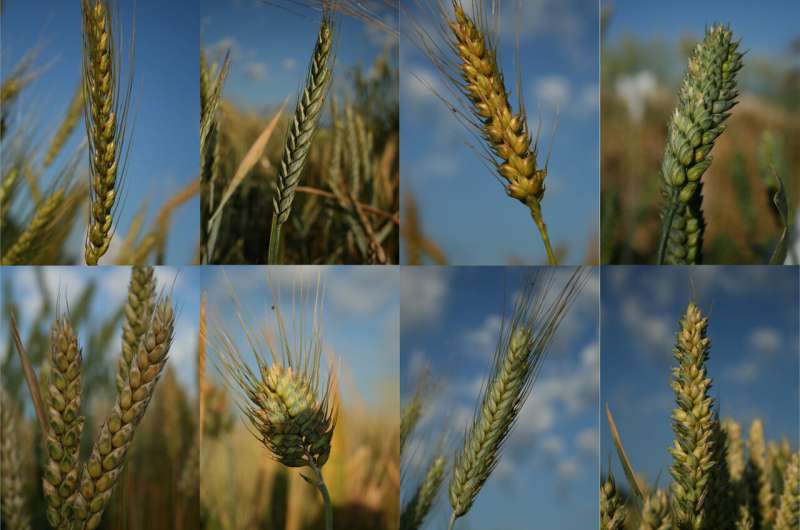May 30, 2019 report
Researchers trace the genetic history and diversity of wheat

A team of researchers from Université Clermont Auvergne and BreedWheat in France and the International Wheat Genome Sequencing Consortium in the U.S. has conducted genomic testing of thousands of wheat types to trace the genetic history and diversity of wheat. In their paper published in the journal Science Advances, the group describes their study of the history of wheat domestication and how it has come to exist in its present state.
Wheat is, of course, one of the main crop staples in the world today. The BBC recently reported that it now comprises approximately 15 percent of human caloric intake. Prior research uncovered evidence indicating that wheat was first domesticated approximately 8,000 to 10,000 years ago in the Fertile Crescent—though some anthropologists have suggested the opposite occurred. They propose that it was wheat and other crop staples that domesticated humans rather than the other way around—instead of relying on the wind to carry its seeds, they note, wheat now has humans planting its seeds all over the world. In either case, the researchers with this new effort sought to get a better view of the history of wheat domestication.
To learn more about how wheat has changed since humans began growing it, the researchers collected and genetically tested 4506 landraces (locally grown cultivars that have been changed using agricultural methods) from 105 sites around the world. Each was genotyped with a high-density single-nucleotide polymorphism array.
The researchers report that they were able to trace the development of wheat from the Fertile Crescent to where it was planted and grown in Europe and on into Asia. They note that wheat underwent a dramatic transformation during the Green Revolution, and the result was reduced diversity. They found that most cultivars grown today originated from strains developed in southeastern Europe around the Mediterranean Sea and on parts of the Iberian Peninsula. They note that the lack of diversity actually presents an opportunity for further advances in wheat production—Asian wheat varieties, they note, present an excellent source of diversity and because of that could be used in future research efforts aimed at increasing crop yields.
More information: François Balfourier et al. Worldwide phylogeography and history of wheat genetic diversity, Science Advances (2019). DOI: 10.1126/sciadv.aav0536
Journal information: Science Advances
© 2019 Science X Network


















